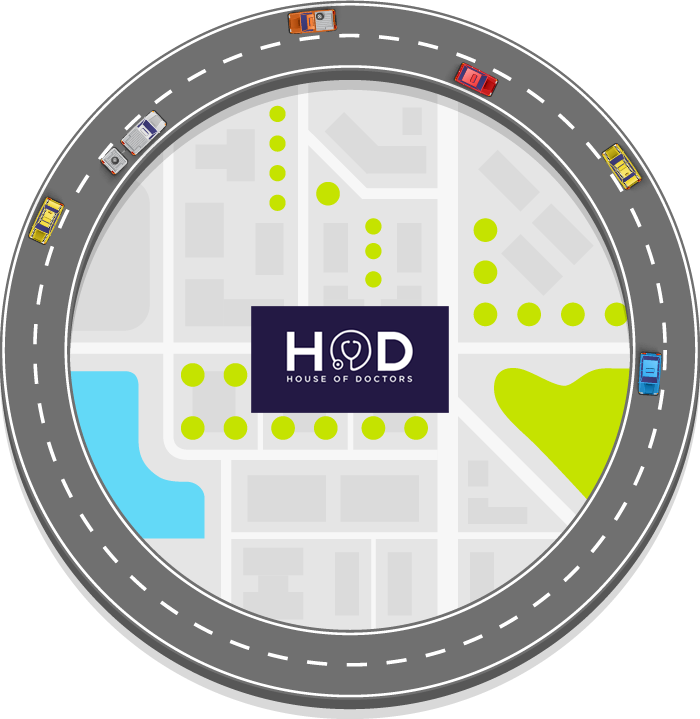What is Angioplasty?
Angioplasty is a minimally invasive procedure used to treat blocked or narrowed arteries in the heart. It involves using a small balloon to open the artery, allowing blood to flow more freely. This procedure is commonly performed to relieve chest pain (angina) or to prevent heart attacks in patients with coronary artery disease. Angioplasty is a preferred treatment because it restores proper blood flow without the need for open-heart surgery, offering a quicker recovery time and fewer risks.
One of the key benefits of angioplasty is its ability to improve a patient’s quality of life by reducing symptoms like shortness of breath and chest discomfort. In many cases, a stent (a small metal tube) is also placed in the artery during angioplasty to keep it open long-term. This procedure is commonly recommended for people with blocked arteries who are at risk of heart attacks. By using angioplasty to treat coronary artery disease, patients can enjoy a better quality of life and reduce their risk of future heart problems.
What happens during angioplasty?
The angioplasty procedure is a straightforward treatment used to open up blocked or narrowed arteries in the heart. Here’s a simple breakdown of what happens during the process:
- Preparing for the Procedure:
(a) You are given medication to help you relax.
(b) A local anesthetic is applied to numb the area where the catheter will be inserted (usually in your arm or leg). - Inserting the Catheter:
(a) A thin tube called a catheter is carefully inserted into a blood vessel and guided toward the blocked artery in the heart. - Inflating the Balloon:
(a) Once the catheter reaches the blocked area, a small balloon at the tip is inflated. This pushes the plaque (fatty deposits) against the artery walls, opening up the artery. - Placing a Stent (if needed):
(a) In many cases, a small metal tube called a stent is placed in the artery to keep it open. This stent stays in place permanently. - Removing the Catheter:
(a) After the artery is widened and the blood flow is improved, the balloon is deflated, and the catheter is carefully removed. - Recovery After the Procedure:
(a) You are monitored for a short period to ensure there are no complications, and most people can go home the next day.
The angioplasty procedure is effective in restoring blood flow and reducing symptoms like chest pain, offering a faster recovery compared to more invasive surgeries.
Why Choose House of Doctors as the Top Hospital for Angioplasty in Mumbai, India?
Here are the key reasons why House of Doctors is the best choice for angioplasty in Mumbai
- Highly Skilled Cardiologists:
House of Doctors has a team of experienced cardiologists who specialize in performing the angioplasty procedure with precision and care. - Advanced Technology:
The hospital is equipped with state-of-the-art technology to ensure accurate diagnosis and successful treatment, making it a trusted choice for angioplasty. - Patient-Centered Care:
House of Doctors focuses on providing personalized care, ensuring that every patient receives the attention and treatment they need throughout the angioplasty procedure. - Minimally Invasive Approach:
The hospital uses advanced techniques that make the angioplasty procedure minimally invasive, ensuring a faster recovery and less discomfort for patients. - Affordable Treatment Options:
House of Doctors offers cost-effective angioplasty treatment, making it accessible to a wide range of patients without compromising on quality care. - Comprehensive Post-Procedure Care:
After the angioplasty procedure, the hospital provides thorough follow-up care to ensure proper recovery and to minimize any risks of future heart issues. - Excellent Success Rates:
With a proven track record of successful angioplasty procedures, House of Doctors has earned a reputation as one of the top hospitals in Mumbai for heart-related treatments.
These factors make House of Doctors a reliable choice for patients seeking quality heart care and effective angioplasty in Mumbai, India.
Angioplasty test price in Mumbai, India
The cost of the angioplasty test in Mumbai can vary based on several factors. Here’s a simple overview:
- Average Cost: The price for angioplasty in Mumbai typically ranges from ₹1,00,000 to ₹2,50,000. This includes the procedure, hospital stay, and necessary tests.
- Factors Affecting Cost
1. Hospital Choice: The type of hospital (government vs. private) can influence the price.
2. Complexity of the Procedure: More complicated cases may cost more due to additional care needed.
3. Stent Type: The choice of stent (drug-coated or bare metal) can also affect the overall price. - Insurance Coverage: Many health insurance plans cover the cost of angioplasty. It’s important to check with your insurance provider for details on coverage.
- Additional Costs: Other expenses, such as consultations, pre-procedure tests, and post-procedure follow-ups, may also add to the total cost.
If you are considering angioplasty, it is advisable to discuss the expected costs with your healthcare provider for a clear understanding.
Surgical Treatments Available at House of Doctors
What is the role of a stent in the heart, and how does it help improve blood flow?
A stent is a small, mesh-like tube used in heart stent surgery to keep narrowed or blocked arteries open. Here’s how a stent works and its role in improving blood flow:
- Restores Blood Flow:
When arteries become narrowed due to plaque buildup (atherosclerosis), blood flow to the heart can be restricted. A stent is placed in the artery during a procedure called stent placement in the heart, which helps to restore normal blood flow. - Minimally Invasive Procedure:
The placement of a stent is typically done through a minimally invasive procedure. A catheter is inserted into a blood vessel, and the stent is guided to the blocked artery, where it is expanded to hold the artery open. - Prevents Re-blockage:
Stents are designed to support the artery walls and prevent them from collapsing. This reduces the chances of the artery re-narrowing after the procedure, known as restenosis. - Improves Heart Function:
By improving blood flow, a stent can alleviate symptoms of heart disease, such as chest pain (angina) and shortness of breath. This leads to better heart function and overall quality of life for patients. - Types of Stents:
There are two main types of stents: bare-metal stents and drug-eluting stents. Drug-eluting stents are coated with medication that helps prevent restenosis by slowly releasing drugs into the artery. - Long-Term Management:
After heart stent surgery, patients may need to take medications, such as blood thinners, to help keep the stent functioning well and to prevent blood clots.
A stent plays a crucial role in heart health by keeping arteries open, restoring blood flow, and improving the quality of life for those with heart disease.
Your Journey at House of Doctors
Why choose House Of Doctors?


Surgeon

Infrastructure

Mediclaim

Pick Up and Drop

Available
Types of Angioplasty
What is the Recovery Time After Angioplasty?
The recovery time after angioplasty can vary from person to person. Here’s a simple overview of what to expect:
- Immediate Recovery: After the angioplasty in Mumbai, you will usually stay in the hospital for a few hours to a day for monitoring. Many people can go home the same day or the next day.
- Initial Rest: It's important to rest for the first few days at home. Avoid heavy lifting or strenuous activities for about a week to allow your body to heal.
- Return to Normal Activities: Most patients can return to their normal daily activities within one to two weeks. However, it’s essential to follow your doctor’s advice on when to resume activities, especially if you had a cardiac stent placed.
- Follow-Up Care: You will have follow-up appointments to check your recovery progress and ensure the stent is functioning well. This usually occurs within a week or two after the procedure.
- Long-Term Care: Continuing medication as prescribed is important to prevent blood clots and ensure your heart stays healthy after angioplasty.
Angioplasty - FAQ's
What is angioplasty?
Angioplasty is a medical procedure used to open blocked or narrowed arteries in the heart. It involves inserting a small balloon into the artery and inflating it to restore blood flow, often accompanied by placing a stent to keep the artery open.
Are there any risks associated with angioplasty?
Like any medical procedure, angioplasty carries some risks, including bleeding, infection, and the possibility of the artery re-narrowing. Your doctor will discuss these risks before the procedure.
Will I need to take medication after angioplasty?
Yes, most patients will need to take medications, such as blood thinners, to help prevent blood clots and ensure the health of the artery after having a cardiac stent placed.
How do I know if I need angioplasty?
Your doctor will assess your symptoms and may conduct tests like angiograms to determine if you need angioplasty. Common symptoms include chest pain, shortness of breath, and fatigue.
How does a stent work?
A stent is a small mesh tube that is placed in the artery to keep it open after angioplasty. It supports the artery walls and helps prevent re-narrowing, allowing for improved blood flow.
What should I avoid after angioplasty?
After the procedure, avoid heavy lifting, strenuous exercise, and activities that put strain on your body for at least a week. Always consult your doctor for specific recommendations.

















